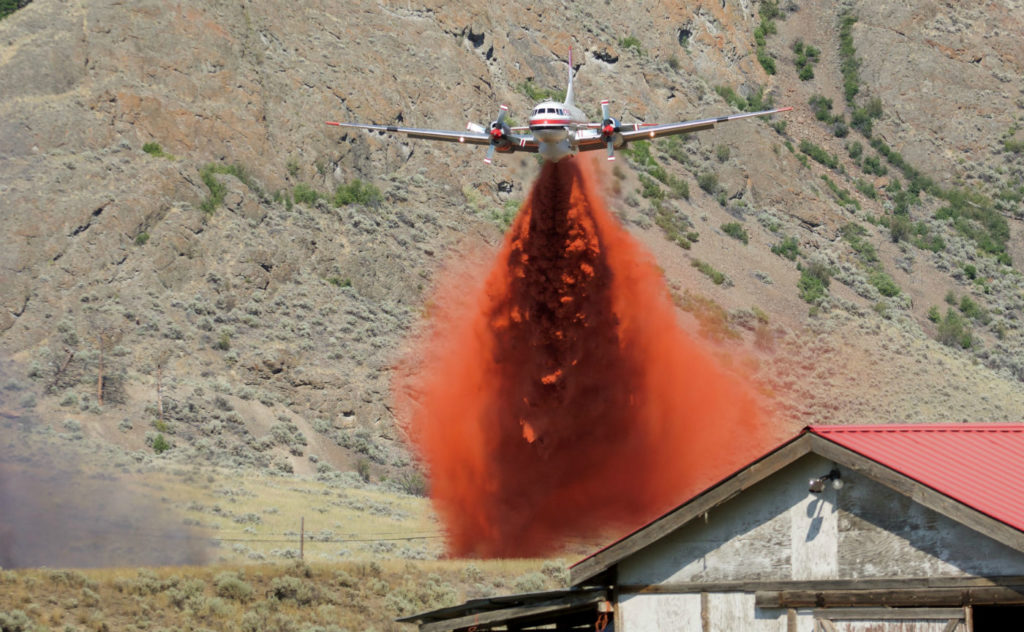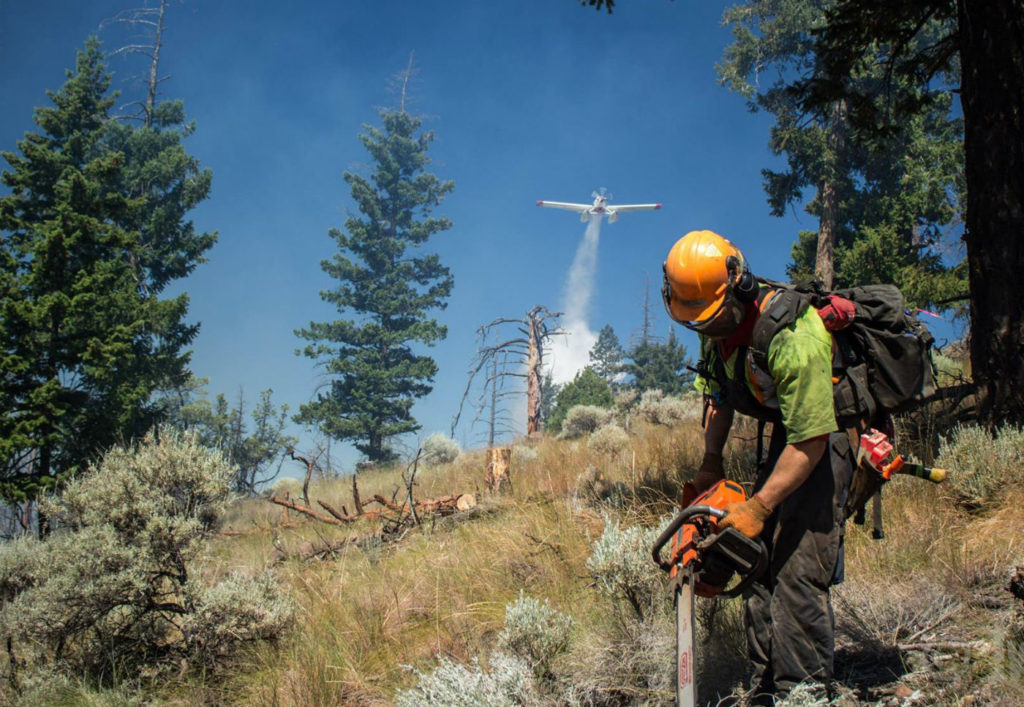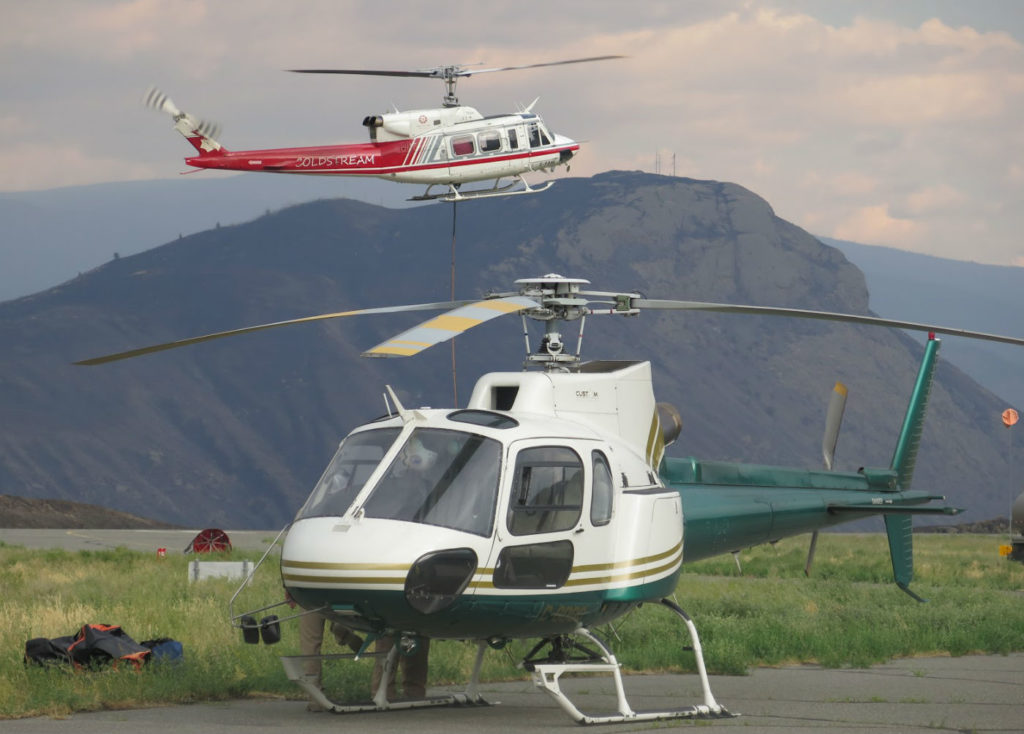Estimated reading time 9 minutes, seconds.
A news-gathering helicopter from CTV Vancouver flew high over the Cache Creek and Boston Flats areas of southern British Columbia this week, its camera zooming in and out to capture swaths of smoldering forest and buildings decimated by hundreds of wildfires that engulfed the province.
The sky was so hazy with smoke at times that the landscape was almost entirely obscured, a hint of what aerial firefighting crews contended with in some places as they dumped water and flame retardant on flames below.
“Like everything else, fighting fire is fighting fire,” said Jeff Berry, director of business development for Abbotsford-based Conair Aerial Firefighting, one of several Canadian aviation companies helping with the firefighting effort.
“But if you can’t see it, it’s pretty hard to fight.”
Visibility was not a concern everywhere in B.C., and Berry noted it has been dependent on weather and atmospheric conditions each day. But he cited smoke in the air as the biggest challenge facing aircrews mid-week.

“I think the burning conditions that are in place in the province now are extreme,” he said. “And I would say that it is early … these types of conditions, in the area that we are working, it typically occurs later in the summer. This year it started earlier than normal.”
As of Thursday afternoon, 188 fires were burning across the province, down from about 220 on Monday. More than 14,000 people had been displaced and thousands of hectares of land had been scorched while firefighters worked to contain the fires.
Aerial fire suppression has been an integral part of those efforts, with 178 aircraft taking part as of Thursday afternoon.

The B.C. Wildfire Service fleet normally has a complement of 24 aircraft, but has brought in 13 additional aircraft, according to Kevin Skrepnek, the province’s chief fire information officer.
Those additional aircraft include 10 air tankers and three bird dog aircraft, he said in a media briefing on Wednesday afternoon.
Two Convair 580 air tankers owned and operated by the Province of Saskatchewan have also been brought in, and the Royal Canadian Air Force has deployed one CC-177 Globemaster, one CC-130J Hercules, two CH-147F Chinook helicopters and three CH-146 Griffon helicopters.

Conair is contributing 21 air tankers and six bird dog aircraft, which help direct how and where air tankers should drop loads of water or flame retardant.
The company has deployed five Convair 580 air tankers; four wheeled Air Tractor AT802s; six AT-802F Fire Boss air tankers with Wipaire amphibious floats; one L-188C Electra; one Avro RJ85 AT; and four CL-215Ts that Conair operates on behalf of the Province of Alberta.
“The big message is, we are there to support the folks in the BC Wildfire Service,” said Berry. “They are doing a great job of managing a difficult situation. Our focus is just making sure we maintain a safe and effective and a serviceable fleet to meet those objectives as they come up.”
Air Spray Airtankers of Edmonton, Alta., is also a major contributor, using five L-188 Electras and an equal number of bird dog aircraft–either Turbo Commander 690s or 695s, said Paul Lane, the company’s vice-president and chief operating officer.
“We train for exactly these kinds of circumstances,” said Lane. “It’s become a big operation here in B.C., whereas last year in Alberta we saw an influx of resources from around the country to meet the needs that were in Fort [McMurray].
“And it’s, I think, a well-oiled model, quite frankly, to share resources and use people and aircraft efficiently in times of extreme need, in one particular location.”
Comparisons to last year’s devastating fires in Fort McMurray are inevitable, as are comparisons with the wildfire in Slave Lake, B.C., in 2011.

But Lane said this year’s set of wildfires in B.C. is not the most intense and challenging mission Air Spray has had.
“We’ve been a company in this business for 50 years,” he said. “We’ve seen extraordinary fires … It’s just a very, very busy, intense period of the fire season, where really one would only be expecting it to be starting to ramp up in B.C. right now.”
Conditions were hot and dry early Thursday afternoon, according to Rob Gallagher, president and accountable executive for Coldstream Helicopters of Vernon, B.C.
The company is using two Bell 212 HP helicopters, one Bell 205 A1++ , and one Bell 407HP with Bambi buckets to douse flames, as well as one Bell 206 used as a torch machine, he said.
“B.C. Forestry’s doing an excellent job,” said Gallagher. “We’ve actually–talking with all of our pilots–haven’t experienced significant issues. ”The biggest thing is making sure that our guys are well-rested.”
The company runs equal-time rotations, with pilots working a two-week-on, two-week-off schedule.
“So that helps to really mitigate against the fatigue issue,” said Gallagher. “And basically, even if the pilot’s flying eight hours a day he’ll never get close to his flight restrictions.”
Gallagher is a pilot himself, and he said the company feels for the people of B.C.
“We have a job to do and we stay fairly focused on that job, but I think the biggest challenge is actually when we’re in town,” he said.

“We’re staying in Kamloops. We can see all the people that are displaced. I think it hits you the hardest there–not necessarily while we’re out flying on missions, but moreso when you’re back in town and you see families completely displaced and no real answers to give them of when they can go back.”
It remains to be seen how long the current crisis will last, but hot and dry conditions are expected to continue across most of southern B.C. for the foreseeable future, with the potential for thunderstorms and significant winds.
There is a belief among some operators the situation may get worse before it gets better.
“This is fairly early for B.C. to be this explosive in fire behaviour, let alone to have this many fires this early in the season,” said Gallagher.
“Our thoughts are with all the families out there that have been displaced, and all the fellow firefighters that are helping with the effort.”








